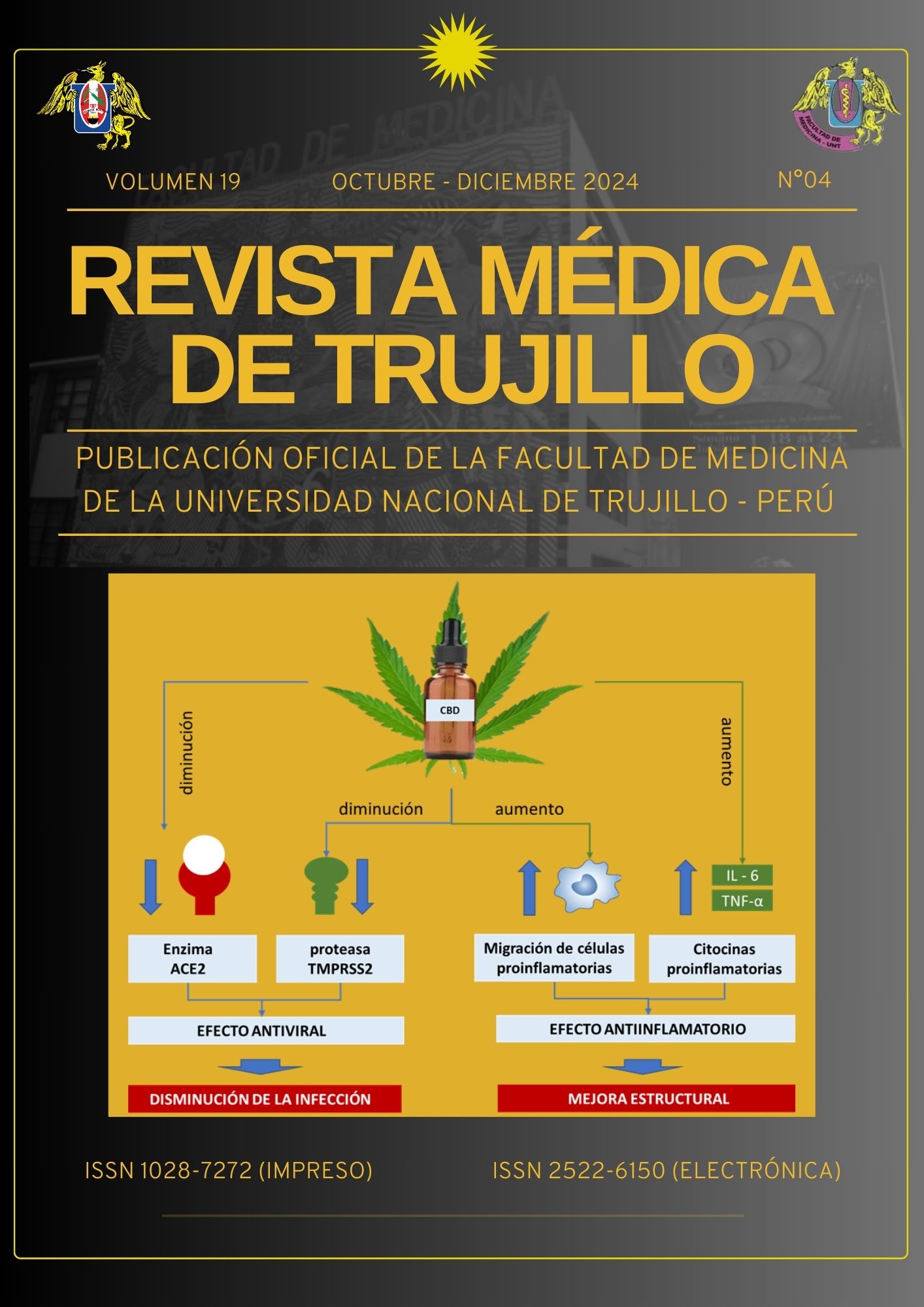Characteristics and level of satisfaction of parentes using pediatric teleconsultation during the Covid-19 pandemic
DOI:
https://doi.org/10.17268/rmt.2024.v19i4.6185Keywords:
patient satisfaction, remote consultation, pediatric, COVID-19Abstract
Objetive: Determine the characteristics and level of satisfaction of parents using pediatric teleconsultation during the COVID-19 pandemic, treated at the Víctor Lazarte Echegaray The sample was made up of 273 parents to whom a user satisfaction survey was conducted by telephone, which consists of 15 questions that were answered based on the Thurstone scale. Results: the level of satisfaction was distributed as high (34.1%), medium (55.3%) and low (10.6%). Most of the patients belonged to the age group of 0-4 years (54.9%), male (54.2%) and resided in the province of Trujillo (67.8%). The parents were mainly aged between 30-39 years (45.8%), were female (90.5%) and had a higher level of education (60%). Teleconsultations had chronic diseases as the main reason for consultation (63.4%), lasted >10 minutes (76.9%), and prescriptions were issued in half of the cases (50.2%). Conclusion: The level of satisfaction of parents using pediatric teleconsultation was mainly at a medium-high level (79.4%). No association was found between the characteristics of the patient, the parent or the teleconsultation with the level of satisfaction.
Downloads
Published
How to Cite
Issue
Section
License
Copyright (c) 2024 "Los autores conservarán sus derechos de autor y garantizarán a la revista el derecho de primera publicación de su obra"

This work is licensed under a Creative Commons Attribution-NonCommercial 4.0 International License.










